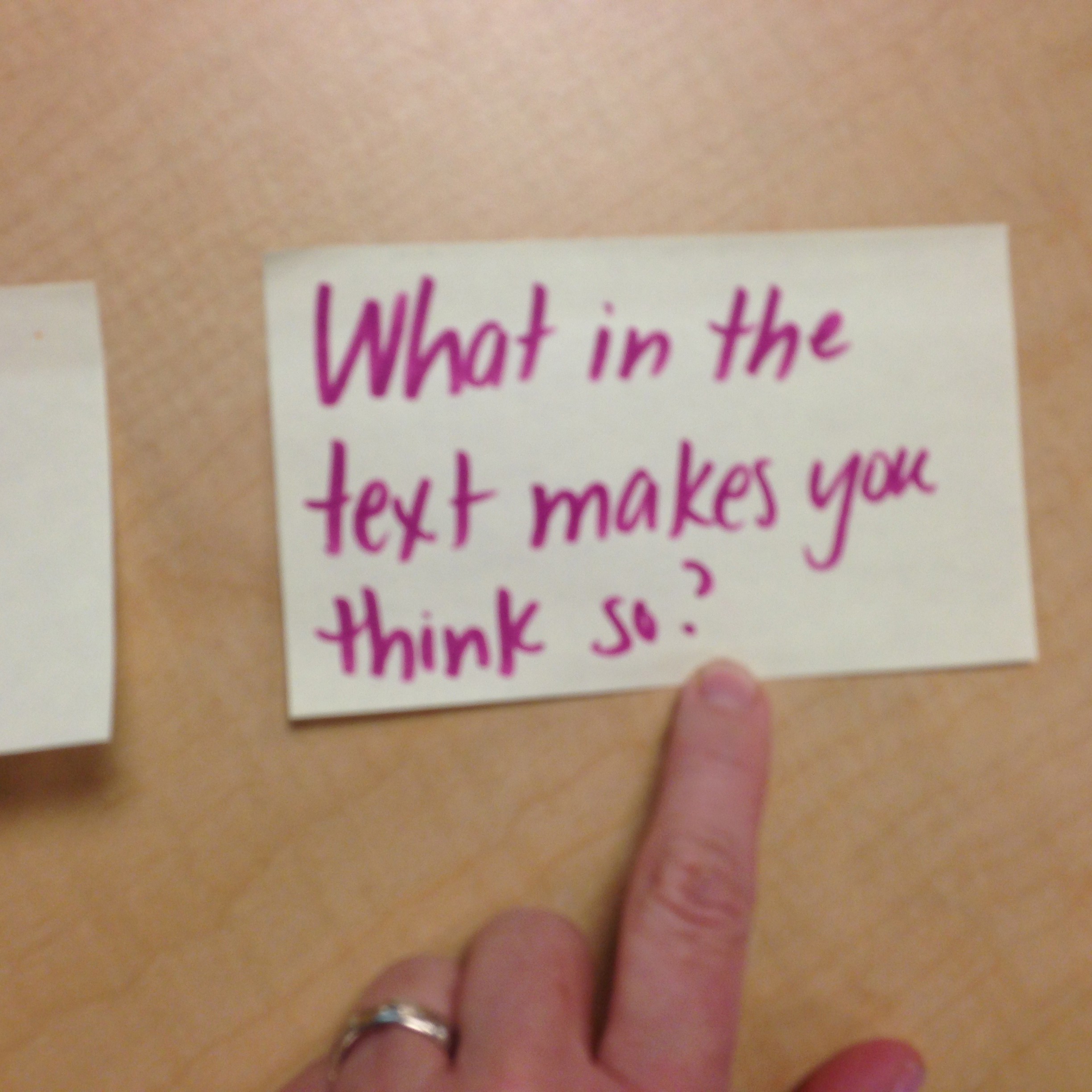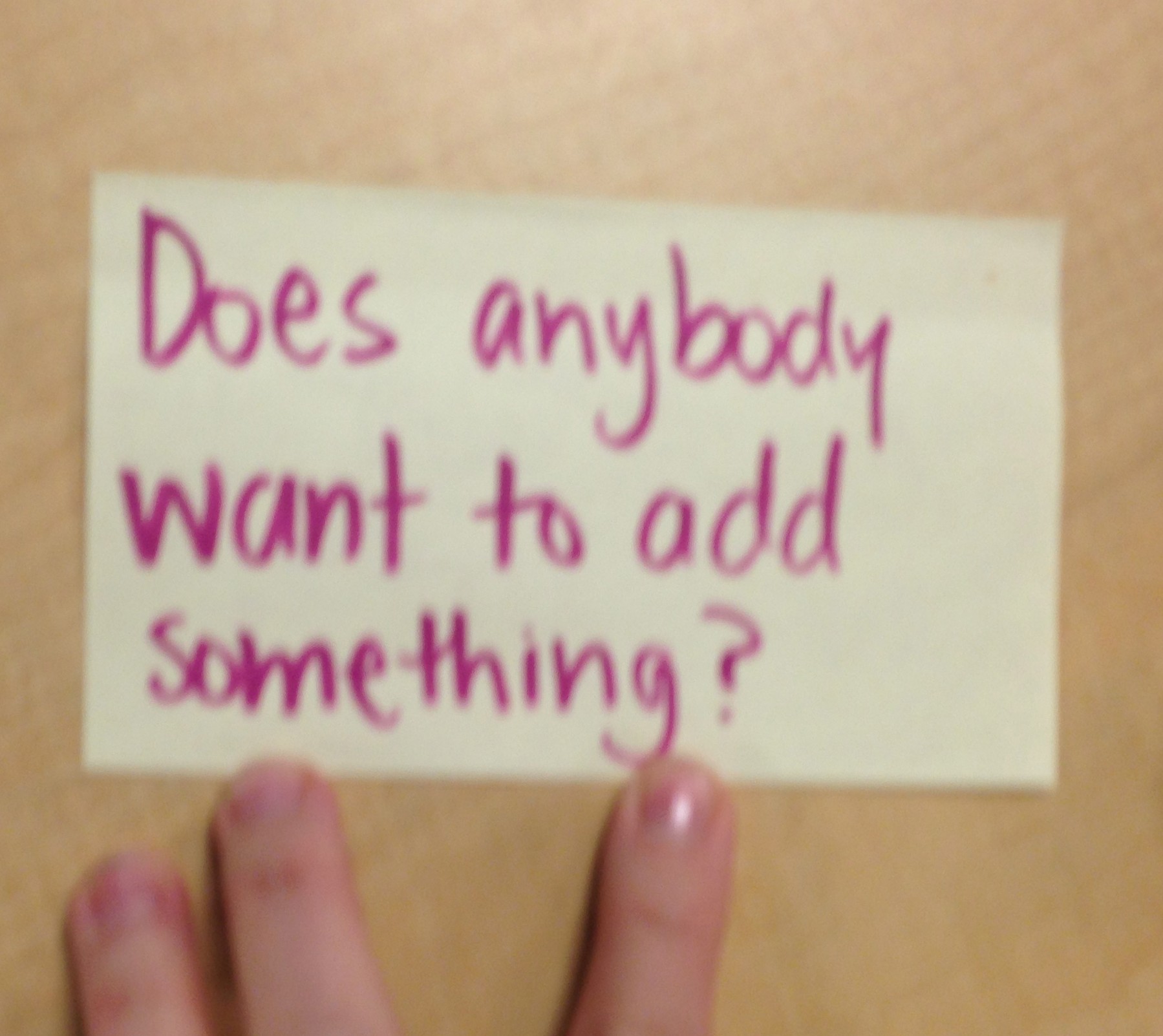

I’ve given up calling on one student at a time during whole group instruction.
A few weeks ago I was walking down the hallway in an urban school and stopped to ask a fourth grade student for directions. She knew where I needed to go, but she struggled to tell me. “Like…well, it’s down there…like by the bathroom…” The directions were actually—go to the end of the hallway and down the stairs, take a right and stop at the classroom next to the bathroom. She could not communicate this clearly. This was not a special needs child or a child learning English. This was an average kid (in a low income school) getting books from her locker in the hallway.
How do I ask this student to engage in collaborative conversations on academic content? And write clearly to convey critical thinking?
I know this is a huge issue for many of our students and I know you know this.
So what am I doing in my practice (on a regular basis) right now to nurture students’ oral language development?
- I’ve given up calling on one student at a time during whole class discussions. This practice, traditionally called I-R-E (initiate-respond-evaluate) has limited value. (Yes! I do occasionally still call on one student…but 99% of the time I don’t!) We tend to call on students who we know will answer correctly or semi-correctly and students can be passive or not actively engaged during this type of instruction.
- I ask students to Turn and Talk AND then I lean in to conversations and coach. The coaching piece is huge. Students can turn and talk about nothing or about irrelevant topics; they might just each give an answer and be done. In other words, there can be very little value in this experience if we are not coaching students, prompting them to build meaning – to listen to each other and contribute to each others’ ideas.
- I will ask a pair of students I coached during Turn and Talk to share out their thinking with the whole class or a student I coached during a guided writing portion of the whole group lesson to put his or her writing on the document camera and share with the whole class.
- AND just recently I’ve been starting guided reading with five minutes of student-led conversation on a relevant academic topic—again with me there to coach and prompt.
The topic of the students’ conversation may be a continuation of what we discussed during whole group instruction and what we’ll be reading about further during small group instruction. It may be related to an essential question and a shared whole class text. (With fourth and fifth graders, this included continuing discussions about texts on the American Revolution, coral bleaching, and so forth – hard topics that students may have little background knowledge on!) The purpose of the conversation may be to follow-up on a particular strategy or skill that was taught or perhaps as a way to warm-up regarding what we will be reading about (maybe previewing the text together and summarizing before we read) or recall what we discussed in a previous small group lesson.
One of the students volunteers to lead. I push my chair back a few inches to signal that I’m not in charge – but I coach, usually providing stems/language to keep the conversation going. Sometimes I even write prompts that are needed on sticky notes (see images in this blog) so they can be referenced over and over again.
It’s amazing what happens for students when they start to understand how they can self-lead –whether during turn and talk or during small group conversations. Actually, it’s liberating – for both me and them.
Okay…just sharing some thinking.
